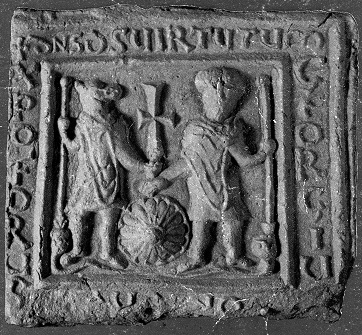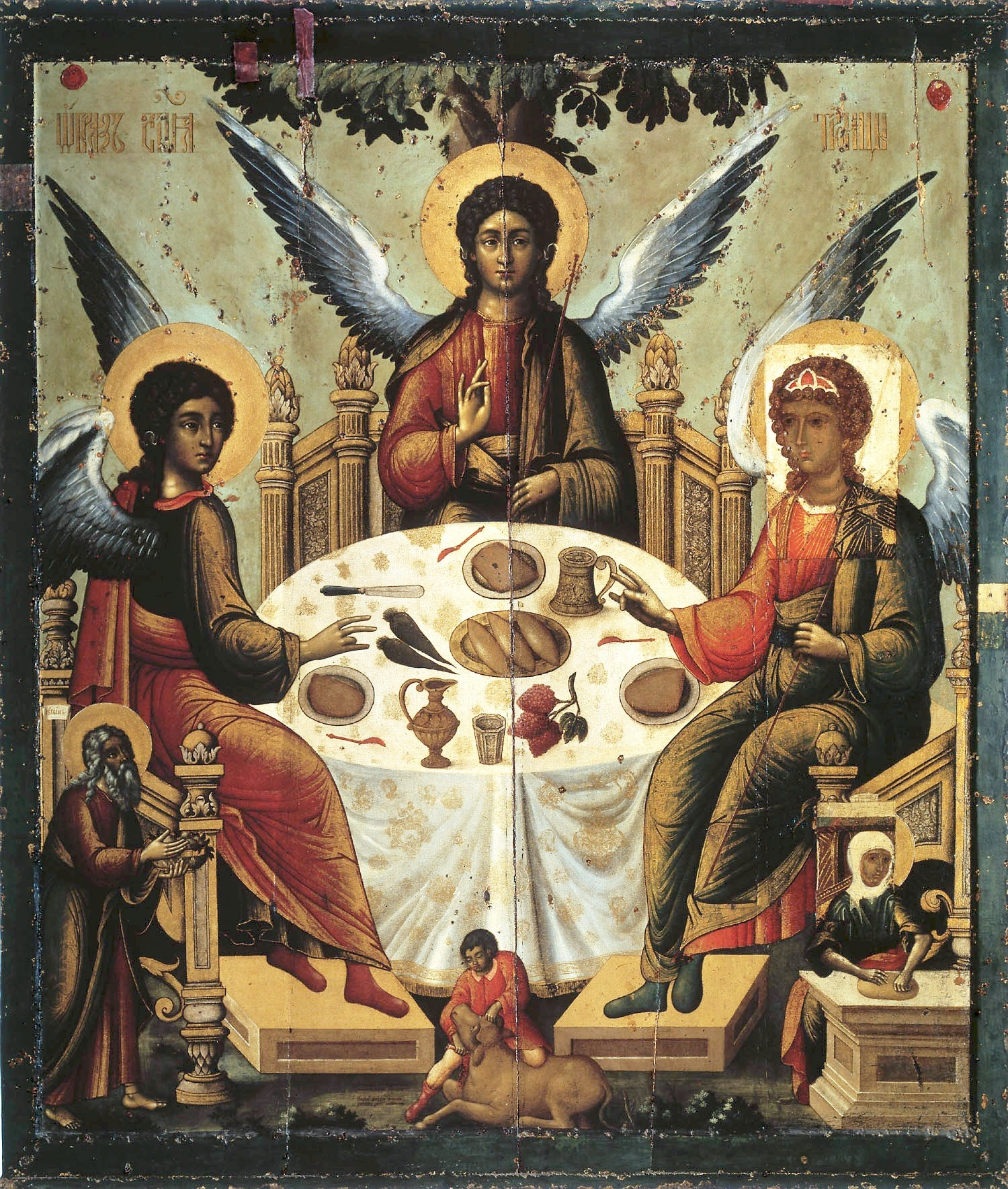|
ÄurÄevdan
George's Day in Spring, or Saint George's Day ( sr, ÐŅŅŅÐĩÐēÐīÐ°Ð―, ÄurÄevdan, ; bg, ÐÐĩŅÐģŅÐūÐēÐīÐĩÐ―, Gergovden; mk, ÐŅŅŅÐūÐēÐīÐĩÐ―, ĮīurĮĩovden; russian: ÐÐģÐūŅÐļÐđ ÐÐĩŅÐ―ÐļÐđ, Yegoriy Veshniy, or russian: ÐŪŅŅÐĩÐē ÐīÐĩÐ―Ņ ÐēÐĩŅÐĩÐ―Ð―ÐļÐđ, Yuryev den vesenniy, George's Day in Spring), is a Slavic religious holiday, the feast of Saint George celebrated on 23 April by the Julian calendar (6 May by the Gregorian calendar). In Croatia and Slovenia, the Roman Catholic version of Saint George's Day, ''Jurjevo'' is celebrated on 23 April by the Gregorian calendar. Saint George is one of the most important saints in the Eastern Orthodox tradition. He is the patron military saint in Slavic, Georgian and Circassian, Cossack, Chetnik military tradition. Christian synaxaria hold that Saint George was a martyr who died for his faith. On icons, he is usually depicted as a man riding a horse and killing a dragon. Beyond Orthodox Christian tradition proper, ''Äur ... [...More Info...] [...Related Items...] OR: [Wikipedia] [Google] [Baidu] |
Saint George's Day
Saint George's Day is the feast day of Saint George, celebrated by Christian churches, countries, and cities of which he is the patron saint, including Bulgaria, England, Georgia, Portugal, Romania, CÃĄceres, Alcoy, Aragon and Catalonia. Saint George's Day is celebrated on 23 April, the traditionally accepted date of the saint's death in the Diocletianic Persecution. Date In the calendars of the Lutheran Churches, those of the Anglican Communion, and the General Calendar of the Roman Rite, the feast of Saint George is normally celebrated on 23 April. Since Easter often falls close to Saint George's Day, the church celebration of the feast may be moved from 23 April: for 2011, 2014, 2019 and 2022 the Lutheran, Anglican and Catholic calendars celebrated Saint George's Day on the first available weekday after the Octave of Easter (see Easter Week) (2 May 2011, 28 April 2014, 29 April 2019 and 25 April 2022 respectively). The church celebration of nearly all saints' days ar ... [...More Info...] [...Related Items...] OR: [Wikipedia] [Google] [Baidu] |
Saint George
Saint George (Greek: ÎÎĩÏÏÎģÎđÎŋÏ (GeÃģrgios), Latin: Georgius, Arabic: اŲŲØŊŲØģ ØŽØąØŽØģ; died 23 April 303), also George of Lydda, was a Christian who is venerated as a saint in Christianity. According to tradition he was a soldier in the Roman army. Saint George was a soldier of Cappadocian Greek origin and member of the Praetorian Guard for Roman emperor Diocletian, who was sentenced to death for refusing to recant his Christian faith. He became one of the most venerated saints and megalomartyrs in Christianity, and he has been especially venerated as a military saint since the Crusades. He is respected by Christians, Druze, as well as some Muslims as a martyr of monotheistic faith. In hagiography, as one of the Fourteen Holy Helpers and one of the most prominent military saints, he is immortalized in the legend of Saint George and the Dragon. His memorial, Saint George's Day, is traditionally celebrated on 23 April. Historically, the countries of England, Ukrai ... [...More Info...] [...Related Items...] OR: [Wikipedia] [Google] [Baidu] |
Slava (tradition)
Slava ( sr-Cyrl, ÐĄÐŧаÐēа, lit=Glory, Celebration, ) is a tradition of the ritual of glorification of one's family's patron saint, found mainly among Serbian Orthodox Christians. The family celebrates the Slava annually on the saint's feast day. In 2014 it was inscribed in UNESCO Intangible Cultural Heritage Lists of Serbia. Overview The Slava is a family's annual ceremony and veneration of their patron saint. It is a tribute to the family's first ancestor who was baptized into Christianity, with its presiding saint. The family's patron saint is passed down from father to son and only males are allowed to carry out the Slava's rituals. Upon marriage, women typically adopt the patron saint of their spouse although it is not uncommon for them to continue celebrating their native family's saint as well (in which case the secondary one is known as ''preslava''). Close friends and family gather at the home for a ritual feast. Although a religious ceremony for the purpose of saint v ... [...More Info...] [...Related Items...] OR: [Wikipedia] [Google] [Baidu] |
6 May
Events Pre-1600 *1527 – Spanish and German troops sack Rome; many scholars consider this the end of the Renaissance. *1536 – The Siege of Cuzco commences, in which Incan forces attempt to retake the city of Cuzco from the Spanish. * 1541 – King Henry VIII orders English-language Bibles be placed in every church. In 1539 the Great Bible would be provided for this purpose. *1542 – Francis Xavier reaches Old Goa, the capital of Portuguese India at the time. *1593 – The Dutch city of Coevorden held by the Spanish, falls to a Dutch and English force. 1601â1900 *1659 – English Restoration: A faction of the British Army removes Richard Cromwell as Lord Protector of the Commonwealth and reinstalls the Rump Parliament. *1682 – Louis XIV of France moves his court to the Palace of Versailles. *1757 – Battle of Prague: A Prussian army fights an Austrian army in Prague during the Seven Years' War. * 1757 – The end of Konb ... [...More Info...] [...Related Items...] OR: [Wikipedia] [Google] [Baidu] |
Synaxaria
Synaxarion or Synexarion (plurals Synaxaria, Synexaria; el, ÎĢÏ Î―ÎąÎūÎŽÏÎđÎŋÎ―, from ÏÏ Î―ÎŽÎģÎĩÎđÎ―, ''synagein'', "to bring together"; cf. etymology of ''synaxis'' and ''synagogue''; Latin: ''Synaxarium'', ''Synexarium''; cop, âēĨâēĐâēâēâēâēâēĢâēâēâē; ar, ŲąŲØģŲŲŲŲŲŲØģŲØ§ØąŲ/ŲąŲØģŲŲŲŲŲŲØģŲØ§ØąŲ/ŲąŲØģŲŲŲŲŲŲØģŲØ§ØąŲ, translit=As-sinkisÄr/As-sankisÄr/As-sinaksÄr) is the name given in the Eastern Orthodox, Oriental Orthodox and Eastern Catholic Churches to a compilation of hagiographies corresponding roughly to the martyrology of the Roman Church. There are two kinds of synaxaria: *Simple synaxaria: lists of the saints arranged in the order of their anniversaries, e.g. the calendar of Morcelli *Historical synaxaria: including biographical notices, e.g. the Menologion of Basil II and the synaxarium of Sirmond. The notices given in the historical synaxaria are summaries of those in the great menologies, or collections of lives of saints, fo ... [...More Info...] [...Related Items...] OR: [Wikipedia] [Google] [Baidu] |
Icon
An icon () is a religious work of art, most commonly a painting, in the cultures of the Eastern Orthodox, Oriental Orthodox, and Catholic churches. They are not simply artworks; "an icon is a sacred image used in religious devotion". The most common subjects include Christ, Mary, saints and angels. Although especially associated with portrait-style images concentrating on one or two main figures, the term also covers most religious images in a variety of artistic media produced by Eastern Christianity, including narrative scenes, usually from the Bible or the lives of saints. Icons are most commonly painted on wood panels with egg tempera, but they may also be cast in metal, carved in stone, embroidered on cloth, done in mosaic or fresco work, printed on paper or metal, etc. Comparable images from Western Christianity can be classified as "icons", although "iconic" may also be used to describe a static style of devotional image. In the Greek language, the term for icon paintin ... [...More Info...] [...Related Items...] OR: [Wikipedia] [Google] [Baidu] |
Saint George And The Dragon
In a legend, Saint Georgea soldier venerated in Christianitydefeats a dragon. The story goes that the dragon originally extorted tribute from villagers. When they ran out of livestock and trinkets for the dragon, they started giving up a human tribute once a year. This was acceptable to the villagers until a princess was chosen as the next offering. The saint thereupon rescues the princess chosen as the next offering. The narrative was first set in Cappadocia in the earliest sources of the 11th and 12th centuries, but transferred to Libya in the 13th-century ''Golden Legend''.St. George and the Dragon: Introduction in: E. Gordon Whatley, Anne B. Thompson, Robert K. Upchurch (eds.), ''Saints' Lives in Middle Spanish Collections'' (2004). The ... [...More Info...] [...Related Items...] OR: [Wikipedia] [Google] [Baidu] |
Balkans
The Balkans ( ), also known as the Balkan Peninsula, is a geographical area in southeastern Europe with various geographical and historical definitions. The region takes its name from the Balkan Mountains that stretch throughout the whole of Bulgaria. The Balkan Peninsula is bordered by the Adriatic Sea in the northwest, the Ionian Sea in the southwest, the Aegean Sea in the south, the Turkish Straits in the east, and the Black Sea in the northeast. The northern border of the peninsula is variously defined. The highest point of the Balkans is Mount Musala, , in the Rila mountain range, Bulgaria. The concept of the Balkan Peninsula was created by the German geographer August Zeune in 1808, who mistakenly considered the Balkan Mountains the dominant mountain system of Southeast Europe spanning from the Adriatic Sea to the Black Sea. The term ''Balkan Peninsula'' was a synonym for Rumelia in the 19th century, the European provinces of the Ottoman Empire. It had a ge ... [...More Info...] [...Related Items...] OR: [Wikipedia] [Google] [Baidu] |
Icon
An icon () is a religious work of art, most commonly a painting, in the cultures of the Eastern Orthodox, Oriental Orthodox, and Catholic churches. They are not simply artworks; "an icon is a sacred image used in religious devotion". The most common subjects include Christ, Mary, saints and angels. Although especially associated with portrait-style images concentrating on one or two main figures, the term also covers most religious images in a variety of artistic media produced by Eastern Christianity, including narrative scenes, usually from the Bible or the lives of saints. Icons are most commonly painted on wood panels with egg tempera, but they may also be cast in metal, carved in stone, embroidered on cloth, done in mosaic or fresco work, printed on paper or metal, etc. Comparable images from Western Christianity can be classified as "icons", although "iconic" may also be used to describe a static style of devotional image. In the Greek language, the term for icon paintin ... [...More Info...] [...Related Items...] OR: [Wikipedia] [Google] [Baidu] |
Serbian Language
Serbian (, ) is the standardized variety of the Serbo-Croatian language mainly used by Serbs. It is the official and national language of Serbia, one of the three official languages of Bosnia and Herzegovina and co-official in Montenegro and Kosovo. It is a recognized minority language in Croatia, North Macedonia, Romania, Hungary, Slovakia, and the Czech Republic. Standard Serbian is based on the most widespread dialect of Serbo-Croatian, Shtokavian (more specifically on the dialects of Å umadija-Vojvodina and Eastern Herzegovina), which is also the basis of standard Croatian, Bosnian, and Montenegrin varieties and therefore the Declaration on the Common Language of Croats, Bosniaks, Serbs, and Montenegrins was issued in 2017. The other dialect spoken by Serbs is Torlakian in southeastern Serbia, which is transitional to Macedonian and Bulgarian. Serbian is practically the only European standard language whose speakers are fully functionally digraphic, using both Cyril ... [...More Info...] [...Related Items...] OR: [Wikipedia] [Google] [Baidu] |
Serbs
The Serbs ( sr-Cyr, ÐĄŅÐąÐļ, Srbi, ) are the most numerous South Slavic ethnic group native to the Balkans in Southeastern Europe, who share a common Serbian ancestry, culture, history and language. The majority of Serbs live in their nation state of Serbia, as well as in Bosnia and Herzegovina, Croatia, Montenegro, and Kosovo. They also form significant minorities in North Macedonia and Slovenia. There is a large Serb diaspora in Western Europe, and outside Europe and there are significant communities in North America and Australia. The Serbs share many cultural traits with the rest of the peoples of Southeast Europe. They are predominantly Eastern Orthodox Christians by religion. The Serbian language (a standardized version of Serbo-Croatian) is official in Serbia, co-official in Kosovo and Bosnia and Herzegovina, and is spoken by the plurality in Montenegro. Ethnology The identity of Serbs is rooted in Eastern Orthodoxy and traditions. In the 19th century, the Serbia ... [...More Info...] [...Related Items...] OR: [Wikipedia] [Google] [Baidu] |
.jpg)




